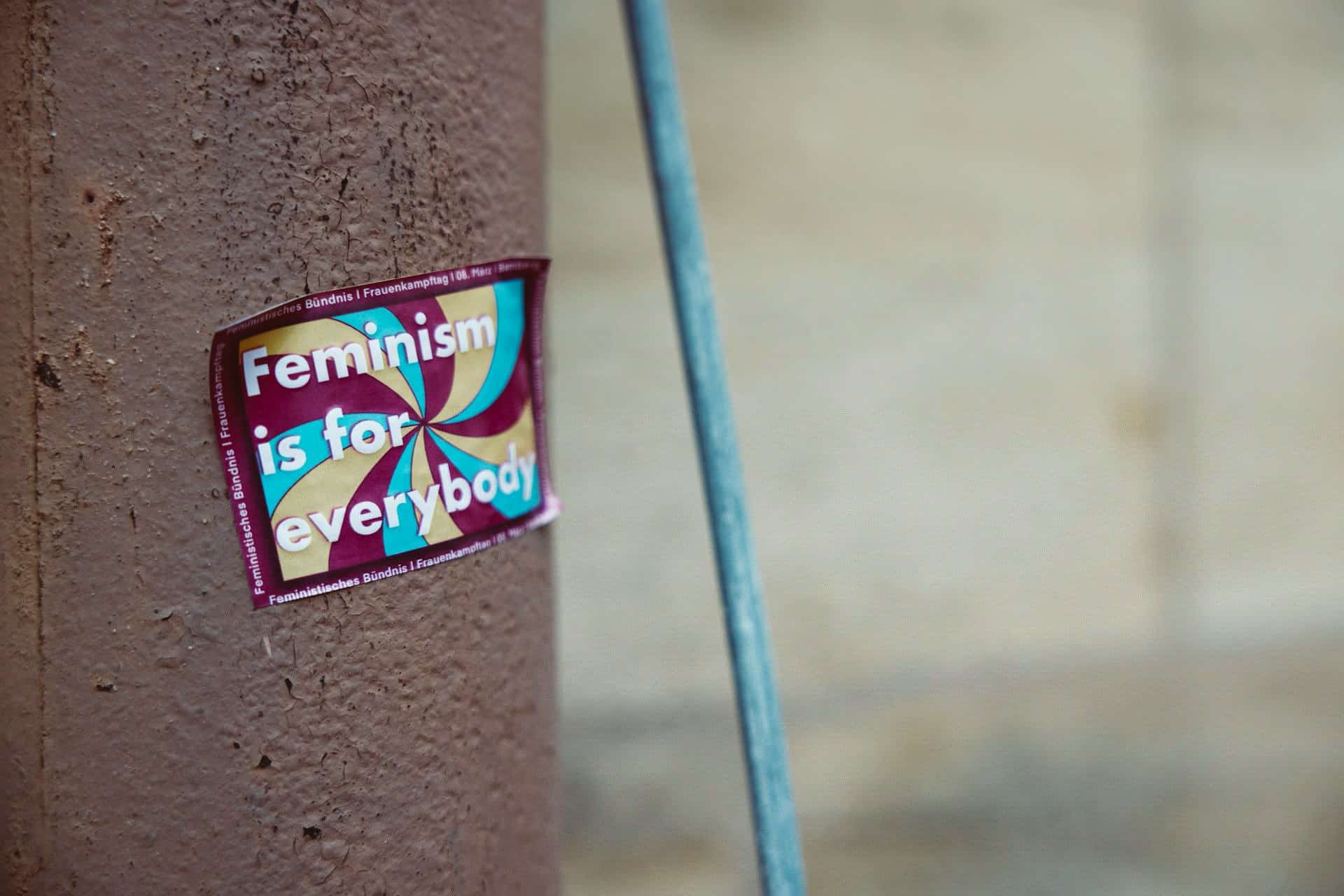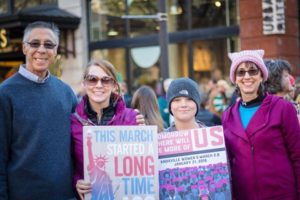- The Meaning of Critical Thinking: A Key Skill for Navigating Today’s Information Landscape - November 3, 2025
- Grandparents Can Develop Activist Grandchildren - September 29, 2025
- Top Six Reasons Credit Union Benefits Are a Smart Choice Over Banks - August 18, 2025
Last Updated on March 8, 2025
This post is about how to be a feminist activist by dismantling barriers for women and girls. Feminism advocates for women’s rights, breaking down harmful societal structures perpetuating inequalities.
This introductory guide welcomes you to explore how to be a feminist activist. You can join the ongoing fight to dismantle barriers for women and girls.
Table of Contents
Breaking Down Barriers for Women and Girls
How to be a Feminist Activist: Breaking Down Barriers for Women and Girls
Find an Activism Method Perfect For You
Learn More: History and Resources
Breaking Down Barriers for Women and Girls
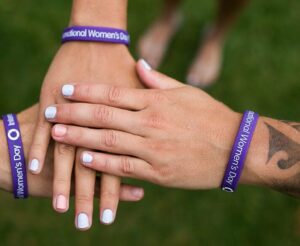
Imagine a gender equal world. A world free of bias, stereotypes, and discrimination. A world that’s diverse, equitable, and inclusive. A world where difference is valued and celebrated. ~ International Women’s’ Day (March 8) Website
Understanding where we stand today requires examining current issues and challenges. Unfortunately, there is much work to do.
The Global Gender Gap
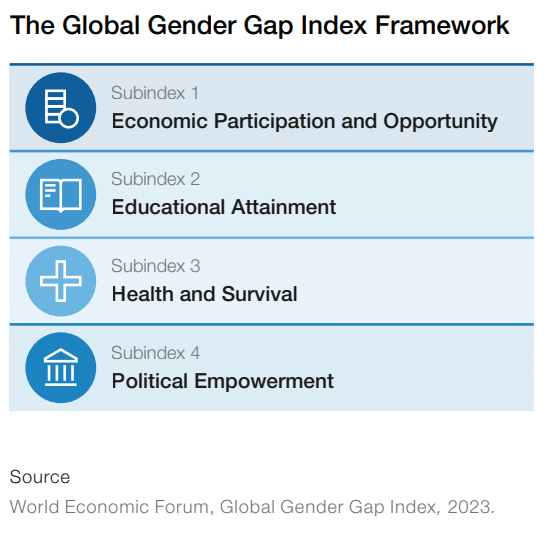
In the World Economic Forum’s report on the Global Gender Gap Index, economic participation, education, health, and political empowerment are the pillars of gender equity. Countries prioritizing these create a culture where everyone, regardless of gender, can thrive. However, the World Economic Forum report predicts you and your children won’t live to see gender parity. Although there has been progress, the slow decrease in the gender gap means feminist activism is critical.
Economic Participation
The economic part of the index refers to economic justice and equal pay.
Unfortunately, globally, women earn around 78% of what men earn for the same work. Women in the US earn about 83 cents for every dollar men earn. The result is that women are more likely to live in poverty. The lack of access to affordable childcare is also an issue for women.
We must work toward closing the pay gap, reducing gender-based discrimination in the workplace, and improving opportunities for women in the workforce.
Educational Attainment
Studies show that education positively impacts the breaking down barriers for women and girls. More school leads to better wages. Higher wages lead to greater financial independence.
Unfortunately, 129 million girls are out of school globally, compared to 64 million boys.
We need gender equality in education, regardless of gender identity or expression. Women with more education are less likely to marry young. This allows them more choices about when or if to have children. Women with more education also tend to ensure their children receive an education, an ever-growing cycle of positive financial viability.
Health and Survival
A relationship exists between good health and economic opportunities for women, allowing them to participate more fully in the workforce.
Women deserve the right to choose what happens to their bodies, including good maternal care and access to safe and legal abortion and contraception. Unfortunately, access to safe and legal abortion faces increasing restrictions in many places in the US.
Women deserve to be safe. Globally, around 1 in 3 women have experienced physical and/or sexual violence by an intimate partner, and one in three women in the US experiences some form of unwanted sexual contact in their lifetime. We must fight against all forms of violence against women and girls, including domestic violence, sexual assault, and human trafficking.
Political Empowerment
In the US, women hold only around around a quarter of seats in the US Congress. Read more feminist issues in How to Make the World a Better Place for Women: Social Justice Themes in “Keep Marching.”
Political empowerment makes a big difference for women. More female political representation is related to lower child mortality rates. When women have a voice in policy decisions, they prioritize healthcare and education, helping children and families. And, countries with higher levels of female political representation show more significant economic growth and less poverty. We need representation to amplify the voices of marginalized women.
How to be a Feminist Activist: Breaking Down Barriers for Women and Girls
Feminism is a movement for equality, aiming to dismantle the systems of oppression that disadvantage women and girls. This includes advocating for equal rights, opportunities, and treatment across all aspects of life.
I offer a 5-Step Activism Path to guide you toward effective activism for the cause closest to your heart. With a thoughtful approach, you’ll be effective and motivated long-term. I recommend that any new activist not jump straight into activism, even though your concern and anger may drive you to take immediate action.
Instead, take time on the research-based 5-Step Activism Path.
- Focus your passion and find the cause closest to your heart among the myriad of causes.
- Match your skills with the type of activism work that best suits you.
- Find an activism opportunity that works for your life.
- Determine if your social justice work truly makes an impact.
- Stay motivated in your activism for the long term.
By taking a thoughtful journey first, you can find the right way to make change. One that works for the way you live your life. And you’ll be more effective and motivated.
How can you help women and girls if this is the cause closest to your heart? Engagement in your cause means you can dive deep, using your best skills and a motivating method. Deep engagement might look like starting a podcast. Sarah Vose created the podcast “Hot Survivors Near You” to highlight the positive aspects of women to incels.
If a different cause is closest to your heart, you can still help women and girls by mobilizing. This might look like showing up for protests and calling your elected representatives on issues affecting women and girls.
Step 1: Focus Your Passion

- Focus leads to effectiveness.
- You can develop your skills and knowledge in your area.
- You are less likely to experience burnout.
For example, instead of setting a goal to make women equal to men, a more focused approach might look like making at least half of your elected representatives women. That is still a massive goal for one person. To make your goal even more focused, consider narrowing your reach by creating a goal to have half of your county’s elected officials be women. That approach is likely doable if you work with others in your community.
Successful social movements are made up of many people focusing on the work in their community. Learn more in Another Brick In The Wall: How Individuals Can Contribute to Social Change Movements.
Step 2: Inventory Your Gifts

Skills
I recommend you use the skills you have right now. These are things you do well and that come naturally to you. Author Mark Henson recommends naming your ordinary superpowers, which you do naturally and well. What are you the go-to person for? If you call your best friend and ask her, “What is my best skill?” her answer may be perfect for your activism.
Knowledge
Knowledge specific to a cause is important but not necessary. You can gain the understanding you need once you decide on the cause closest to your heart.
Every activist should consider their level of cultural competence. For example, examine how you connect with those of diverse cultural backgrounds. Recognize where you hold privilege and how it affects your work. Then, pinpoint your areas of growth.
Cultural competence is critical in breaking down barriers for women and girls, so a significant first step for inventorying your knowledge is to check your privilege. Dr. Peggy McIntosh, who first researched privilege, described it as “an invisible weightless knapsack of special provisions, maps, passports, codebooks, visas, clothes, tools, and blank checks.” These extra tools allow those with privilege an easier passage through life even though they didn’t do anything to earn it.
Try the “How Privileged Are You?” quiz at BuzzFeed. I experienced a significant shift in my perspective when I completed this quiz. One that made me a better activist.
Understanding Intersectionality
Intersectionality describes how systems of oppression are interconnected. The term was introduced by Kimberlé Crenshaw to explain how multiple aspects of identity, such as race, class, gender, sexuality, and ability, intertwine, creating unique experiences of oppression.
For example, a Black female experiences the intersection of gender and race. Her experiences are unique, challenging, and different from those of a trans woman.
Watch Intersectionality 101, a short video explaining the concept of intersectionality.
Feminism with an intersectional lens recognizes that different aspects of identity are interconnected and that we need tailored approaches to breaking down barriers for women and girls.
Gender is a Social Construct
Gender is a social construct, not a binary category. This means gender-based inequality is a product of power structures that can be changed. When gender is seen this way, we move beyond encouraging women to fit into existing structures. Instead, we advocate for a world where gender doesn’t limit individual opportunities. We can break down these barriers for women and girls.
Activism can address the root causes of gender-based discrimination, such as challenging harmful stereotypes. Also, we must reform organizations whose structure perpetuates inequality.
Personal Motivation
Building your personal motivation into your activism is essential because the work can sometimes be challenging.
Pay attention to what long-term, effective activists do: they are clear about what motivates them and ensure it is part of their work.
There are 4 areas of personal motivation:
- Translating values into positive change
- Getting satisfaction from the activism work itself
- Enjoying working with others
- Feeling capable and learning
Learn more about your personal motivation.
Step 3: Find an Activism Method Perfect For You

Fortunately, there are many activism methods to choose from. Even cooking, crafting, kayaking, and photography have been used in activism. Choose something you do well and match that to your passions to find the best opportunity for you.
Browse examples of activism methods:
Advocacy

Help kids learn how to support women and girls. If working with kids motivates you, help them become more aware of your cause and guide them toward a life of making change.
Hold a community conversation about the lived experiences of others. When working in activism, it is vital to listen to people who have been affected, including those with lived experiences. You can make that happen by organizing a community conversation.
Train people to recognize human trafficking. Truckers in Trafficking provides training to recognize human trafficking.
Art as Activism
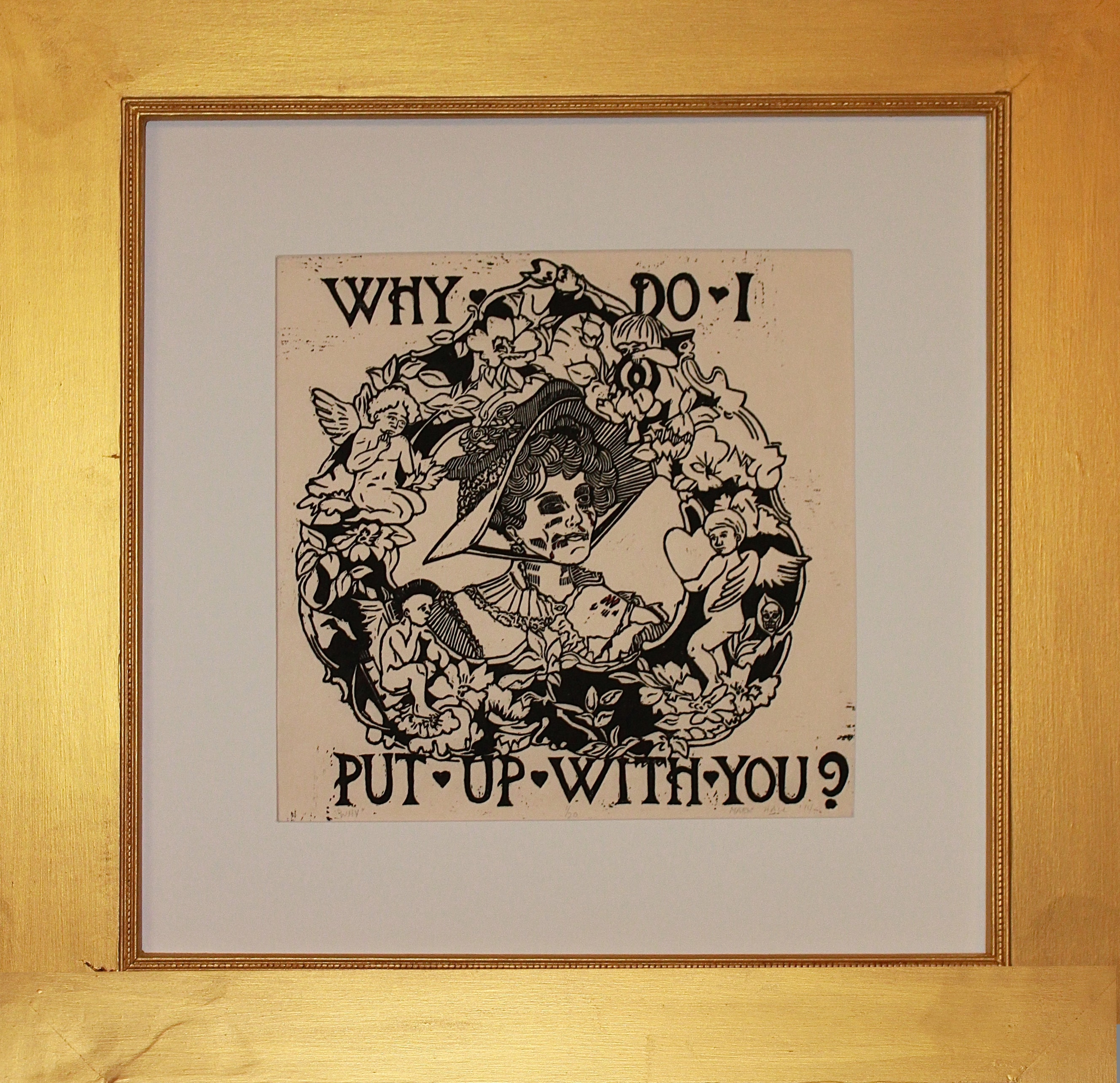
Make a documentary about your cause. “Knock Down the House” is about US Rep. Alexandria Ocasio-Cortez, who ran against big-money politicians in the 2018 midterm elections.
Create sculptures to highlight feminism. Do you love to build art with your hands? Use your talent to highlight your cause. The ‘Lynching’ Memorial in Montgomery, Alabama, is an example of sending a powerful message with sculpture.
Write a play highlighting feminist issues. Capture the power of theater to change minds. A famous example is Eve Ensler’s “The Vagina Monologues.”
Write a book about your cause. Leah Thomas wrote the book The Intersectional Feminist.
Fundraising
Donate a percentage of your income or profits to your cause. Fundraising is critical for nonprofits, and having steady contributions helps them budget.
Movement Support
Organize a celebration after a successful campaign. Activists must stay motivated over the long haul. Are you good at organizing parties? Use your skills to celebrate the work.
Social Media
Protest against misogyny. The 2017 Women’s March on Washington, the largest protest in the world, began with a Facebook post by Teresa Shook suggesting a women’s march. The hashtag #WomensMarch helped spread the word.
Specialized Skills: Leadership
Organize a school walkout. Causes that impact students can be highlighted with a school walkout. An example is a walkout to protest inequality in girls’ sports.
There are many ways to support your cause, but choose one that keeps you engaged and motivated.
Step 4: Maximize Your Impact

Use these questions to figure out whether your activism focus is effective.
- Will the activism dramatically improve a large number of lives?
- How much change can I make?
- How much is the cause overlooked?
- Will my skills and passions lead to making a difference?
Learn more about activism impact.
Step 5: Stay Motivated

The other aspect of staying motivated is making sure you avoid burnout. Working for a cause you love and being deeply engaged could be motivating but also lead to stress and trouble managing it. Learn more about how to take care of yourself.
Call to Action
Now that you know how to be a feminist activist, take your first step. Remember that many people making small changes support a movement.
Feminism is about creating a world where everyone, regardless of gender identity, has equal rights and opportunities. While breaking down barriers for women and girls may seem daunting, following the 5-Step Activism Path will make the journey easier. Becoming a feminist activist can be as simple as acting daily. Even small actions like talking to friends and family about gender equality, challenging sexist remarks, or amplifying the voices of marginalized women on social media can make a difference. Remember, feminism thrives on collective action; every action contributes to building a fairer future. So, take the first step today and join the movement.
Learn More: History and Resources
The story of women’s struggle for equality belongs to no single feminist nor to any one organization but to the collective efforts of all who care about human rights. ~ Gloria Steinem
Feminist Activism History
There have always been people breaking down barriers for women and girls. And these multitudes of people paved the way for our rights today.
This is a selection of feminist activism’s historical moments and people. However, the people who made a mark in history may have experienced more privilege, unlike those who made a difference but were not recognized.
1300-1800
1300-1600: During this time, only women with privilege were known for challenging gender norms. Italian women such as Isotta Nogarola, Laura Cereta, and Moderata Fonte wrote about women’s intellectual equality.
1650: America’s first poet, Puritan Anne Bradstreet, wrote about patriarchy in a subtle, sometimes sarcastic manner.
1792: Mary Wollstonecraft published A Vindication of the Rights of Woman, sharing her arguments for women’s education and equality.
1800-1900
1848: The Seneca Falls Convention, organized by Elizabeth Cady Stanton and Lucretia Mott, focused on women’s suffrage and equal rights. This is often cited as the start of the movement. However, Black women had already organized before this, specifically at an African Methodist Episcopal (AME) Church conference.
1851: Sojourner Truth’s speech at the Ohio Women’s Rights Convention highlighted Black women’s unique experiences and struggles in the fight for abolition and women’s rights. (She didn’t say, “Ain’t I a Woman.”)
1869: The territories were more lenient about providing women with voting rights. Wyoming Territory was the first US state or territory to do so.
1869: Founding of the National Woman Suffrage Association. Leaders Susan B. Anthony and Elizabeth Cady Stanton advocated for a federal constitutional amendment guaranteeing women’s right to vote.
1896: Founding of the National Association of Colored Women’s Clubs. Leader Ida B. Wells-Barnett and members advocated for voting, anti-lynching campaigns, and education for Black children.
1900-2000
1916: Jeannette Rankin becomes the first woman elected to the US House of Representatives.
1917: Women used various methods to lobby Woodrow Wilson for voting rights, including marches and picketing the White House. They were successful in getting Wilson’s support.
1920: The ratification of the 19th Amendment in the US granted women the right to vote, a victory achieved through decades of persistent activism. At the time of ratification, many Black women would still not be able to vote because of state law, poll taxes, and literacy tests.
1923: The Equal Rights Amendment (ERA) is first introduced in Congress. It aimed to guarantee equal legal rights for all American citizens regardless of sex. It still hasn’t been ratified.
1963: Betty Friedan’s groundbreaking book, The Feminine Mystique, ignited feminism by challenging societal norms and advocating for women’s rights in the workplace.
1963: The Equal Pay Act was enacted, prohibiting sex-based wage discrimination, although wage gaps persist today.
1972: The passage of Title IX in the US prohibited discrimination based on sex in educational programs, a significant step towards equal access to educational opportunities.
1973: Roe v. Wade The Supreme Court legalizes abortion in the US, though this right is increasingly restricted in many states.
1977: The Combahee River Collective Statement outlined the concept of intersectionality and how different forms of oppression overlap and uniquely affect Black women.
1994: Violence Against Women Act addressed domestic violence, sexual assault, and stalking.
1995: The Fourth World Conference on Women in Beijing brought together activists worldwide to address critical issues like violence against women and reproductive rights.
2000-present
2014: The Say Her Name Movement, founded by the African American Policy Forum, raised awareness and demanded justice for Black women and girls killed by police.
2017: Tarana Burke sparked the #MeToo movement, which arose as a global outcry against sexual harassment and assault, empowering survivors and sparking crucial conversations about consent and accountability.
2020: 100th Anniversary of the 19th Amendment. Many celebrations were held on the 100th anniversary. I enjoyed attending a play called “Suffrage: War of the Roses,” which focused on the few weeks before the August vote and featured the story of a Tennessee mother who encouraged her son to cast the deciding vote.
How to Be A Feminist Activist: Resources
Becoming a feminist activist can be a powerful way to advocate for equality and create positive change.
Read
- How to Make the World a Better Place for Women: Social Justice Themes in “Keep Marching”
- The Feminine Mystique by Betty Friedan
- We Should All Be Feminists by Chimamanda Ngozi Adichie
- Hood Feminism: Notes from the Edges of the Movement by Mikki Kendall
- Books by bell hooks, who wrote about oppression and Black feminist action.
- Best feminist books to read ahead of International Women’s Day 2024.
- Vanguard: How Black Women Broke Barriers, Won the Vote, and Insisted on Equality for All by Martha S. Jones
- Ms. Magazine
Browse
The National Organization for Women works toward economic equality, abortion rights, reproductive freedom, racial equality, LGBTQIA+ rights, and ending violence against women. You can search for local groups.
The Feminist Majority Foundation works toward women’s equality, reproductive health, and non-violence.
UN Women is an arm of the United Nations and focuses on female leadership and equality, income security, women’s safety, and peacebuilding.
Feministing: The Empowerment Podcast
MoveOn is a mobilizing platform to support candidates and legislation.
Indivisible provides training and tools for local activism and civic engagement.
The ACLU (American Civil Liberties Union) works toward women’s rights and reproductive justice.
Planned Parenthood provides resources and care and advocates for women’s reproductive rights and healthcare access.
The National Domestic Violence Hotline provides resources and support for survivors of domestic violence.
Connecting with Others
Search online for local groups and events. For example, Indivisible, NOW, and Planned Parenthood are good places to start.
Use online forums and communities to connect with other feminist activists.
